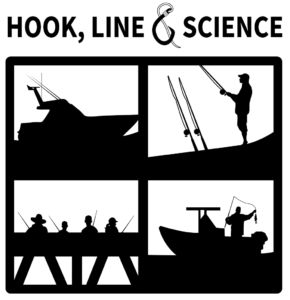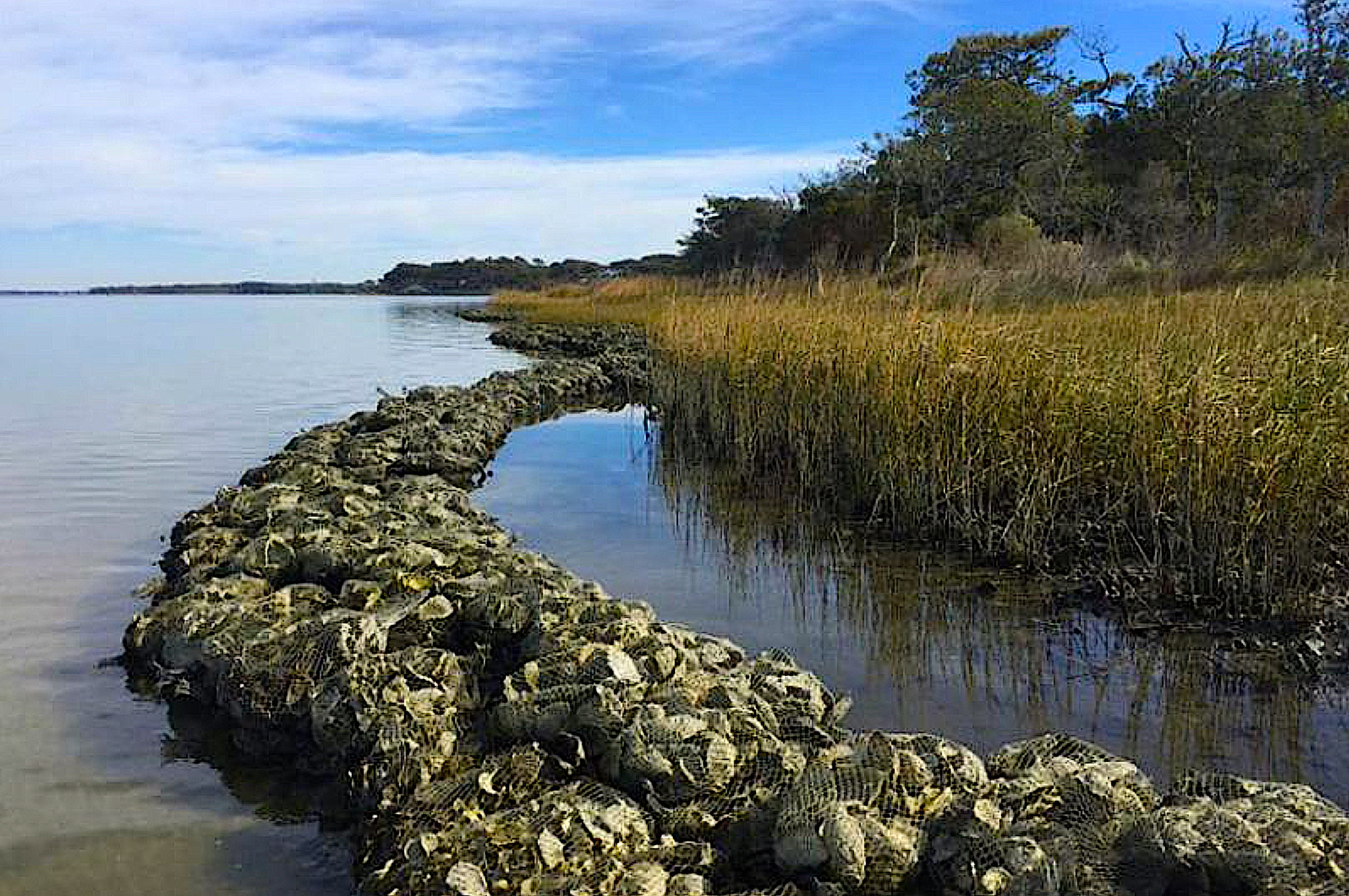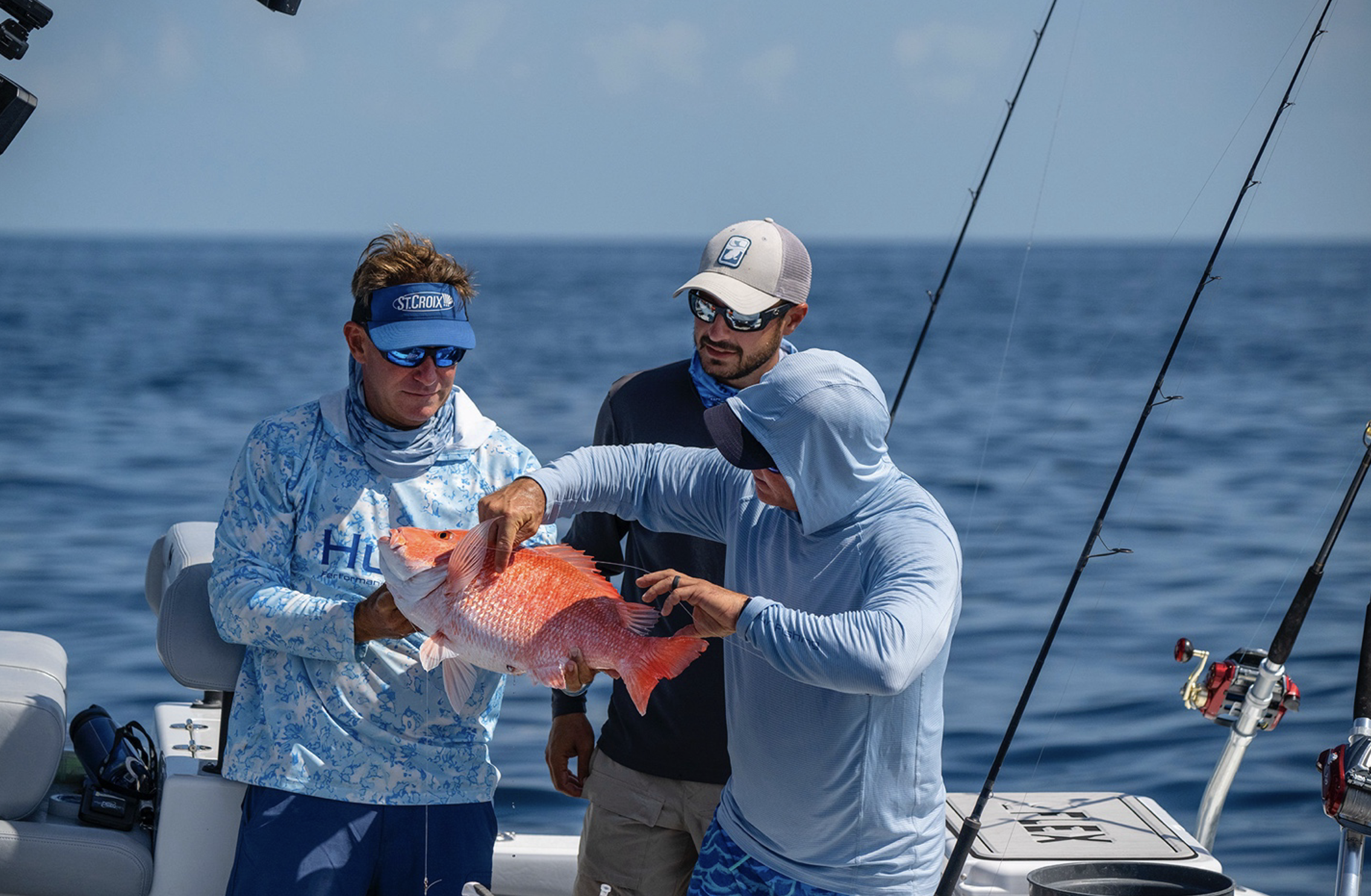New research shows how eco-friendly structures compare with natural marshes.
Research Need
Marshes and oyster reefs play vital roles in improving water quality and protecting coastlines from erosion, as well as supporting fisheries by providing essential habitat for fish. Unfortunately, these habitats are declining worldwide due to human-driven habitat loss, pollution, invasive species, and climate change.
To combat this decline, researchers, policymakers, and local communities are collaborating to build “living shorelines” — structures made from natural and human-made materials, designed to prevent shoreline erosion and restore marsh and oyster reefs.
But do living shorelines perform the same functions as natural habitats?
Studies have shown that living shorelines effectively prevent erosion while supporting other important functions, such as providing habitat for fish and storing carbon. However, most research has examined living shorelines within the first few years after installation, leaving questions about their long-term impact.
So, how do living shorelines affect fish several years after installation?
What did they study?
Researchers revisited four living shoreline sites in North Carolina: Hatteras, Pine Knoll Shores, Jones Island, and Morris Landing. Fish sampling at these sites was first conducted before the installation of the living shorelines in 2010 and 2011 and again immediately after installation in 2012. To understand the long-term effects, the team returned in 2016 to resample fish using fyke nets (long bag nets).
Sampling occurred monthly during the summer and fall. The nets soaked for approximately six hours, covering a full tidal cycle from high to low tide.
After retrieving the nets, the researchers identified and counted the fish by species. Researchers paired each living shoreline site with a natural marsh, allowing them to study how living shorelines affect the numbers and types of fish.
What did they find?
Fish use living shorelines much like they use natural marshes, even five years after the installation of living shorelines. At the living shorelines sites, researchers caught a total of 3,175 fish, 2,910 crabs and shrimp, and 16 squid. At the natural marsh control sites, they caught 2,060 fish, 1,360 crabs and shrimp, and 17 squid.
Two of the four living shoreline sites — Hatteras and Pine Knoll Shores — stood out with significantly more fish than their paired natural marshes. At Hatteras, researchers caught 458 fish at the living shoreline, compared to 271 at the control site; Pine Knoll Shores had 1,251 fish at the living shoreline, compared to 605 at the control site.
Interestingly, these two living shorelines were built with granite rock sills instead of the oyster bag sills that researchers initially thought would be more effective.
What else did they find?
In addition to finding similar numbers of fish, researchers observed similar types of fish at the living shoreline and natural marsh sites. They identified 45 different species at the living shorelines sites and 50 species at the control sites.
Pinfish, mullet, and Atlantic silversides were the most common fish caught at all locations. Among the crustaceans, grass shrimp, penaeid shrimp, and blue crabs were the most abundant.
So what?
Living shorelines appear to provide suitable habitat for fish for the first five years after installation. Further research should explore how different construction materials might affect fish use, as well as the long-term effectiveness of these shorelines.
Reading
Smith, C. S., Kochan, D. P., Neylan, I. P., & Gittman, R. K. (2024). Living Shorelines Equal or Outperform Natural Shorelines as Fish Habitat Over Time: Updated Results from a Long-Term BACI Study at Multiple Sites. Estuaries and Coasts, 47(8), 2655–2669. https://doi.org/10.1007/s12237-024-01429-5
This work was supported by two North Carolina Coastal Recreational Fishing License grants to C. Peterson, R. Gittman, and C. Smith, and by a North Carolina Sea Grant Coastal Policy Research Fellowship to C. Smith.
Lead photo by NOAA.
The text from Hook, Line & Science is available to reprint and republish at no cost, but only in its entirety and with this attribution: Hook, Line & Science, courtesy of Scott Baker and Sara Mirabilio, North Carolina Sea Grant.

- Categories:




